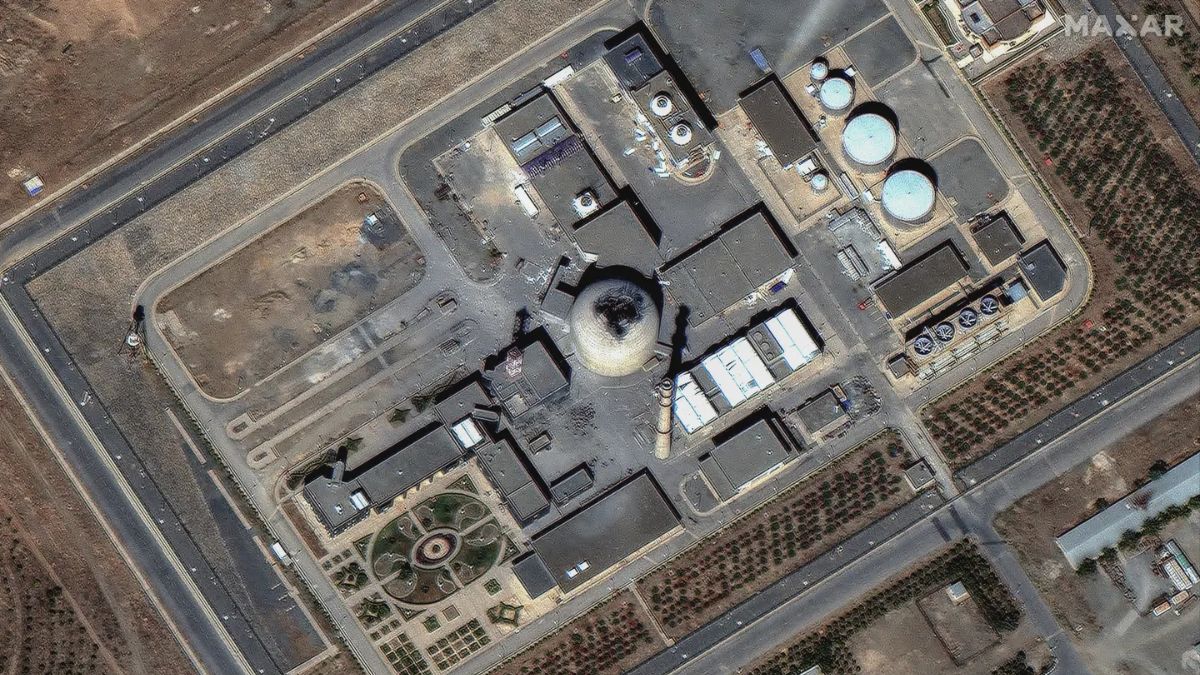Israel on Thursday carried out strikes on Iran’s Arak heavy water reactor in its latest offensive against Tehran’s sprawling nuclear programme, dramatically escalating the conflict in West Asia.
The massive explosion, captured in dramatic satellite footage, showed fire and smoke billowing from the site, just 250 kilometres southwest of Tehran.
The Israel Defence Forces (IDF) shared a video of the nuclear reactor, claiming that it was being used by Iran to create a nuclear bomb.
“This nuclear reactor in Arak was created for one purpose: to build a nuclear bomb. It has now been neutralised. Here is a closer look at the reactor itself,” it said, sharing the video.
This strike marked the latest move in Israel’s campaign to dismantle Iran’s nuclear infrastructure, following recent attacks on facilities in Natanz, Isfahan, and near Tehran.
As questions swirl about the implications of this strike, the Arak reactor has once again become the centre of global attention. Here’s what we know about the facility.
A legacy of Iran’s nuclear ambitions
The Arak reactor traces its origins back to Iran’s military nuclear ambitions in the 1990s, following the country’s brutal war with Iraq. When foreign powers refused to supply the necessary reactor technology, Iran took matters into its own hands and began constructing the facility independently.
Designed as a heavy water reactor, Arak uses a special type of water where the hydrogen atoms are replaced by deuterium. This setup allows the reactor to run on natural uranium, which in turn produces plutonium as a byproduct, a material that can potentially be extracted and used in nuclear weapons.
Though Iran has long maintained that its program is for peaceful purposes. However, it also had been enriching uranium up to 60 per cent, a short, technical step away from weapons-grade levels of 90 per cent. Iran was the only non-nuclear-weapon state to enrich at that level.
The international community has remained deeply uneasy about Arak, especially since other countries have used similar reactors to produce plutonium for nuclear arms.
Adding to the concern is the secrecy surrounding the site’s development, with reports suggesting that foreign experts—possibly including Russian engineers, were involved in its construction. The full extent of that involvement, however, remains unclear.
A key player in Iran’s 2015 nuclear deal
After Iran secretly developed its heavy water research reactor, a turning point came in 2015, when Iran signed a historic agreement with several world powers, including the United States.
Commonly referred to as the Iran nuclear deal, the pact aimed to roll back Tehran’s nuclear programme in exchange for relief from billions of dollars’ worth of international sanctions, Politico reported.
As part of the deal, Iran committed to redesigning the Arak reactor and scaling back parts of its nuclear infrastructure to address global concerns around nuclear proliferation.
In 2019, Iran proceeded with launching the secondary circuit of the Arak reactor. While this did not constitute a formal breach of the 2015 agreement, it was widely seen as a significant step that nudged the country closer to nuclear weapons capability.
However, the Arak reactor returned to the global spotlight, following the US exit from the deal.
Ali Akbar Salehi, a top Iranian nuclear official, claimed on Iranian state television in 2019 that Iran had obtained extra parts to replace the section of the reactor that had been sealed with concrete as per the nuclear agreement.
With Iran increasingly limiting access to its nuclear facilities, the IAEA later said it had lost “continuity of knowledge” regarding the country’s heavy water production. This meant inspectors could no longer independently verify how much heavy water Iran was producing or stockpiling.
Why Israel struck the Arak heavy water reactor
Although the Arak reactor has never been brought online and has never been fuelled with uranium, Israel said the facility posed a significant risk that needed to be neutralised.
Nuclear analysts estimate that if Arak were ever fully operational, it could generate up to 9 kilograms of plutonium each year, an amount sufficient to build at least one nuclear weapon annually, provided the spent fuel is reprocessed.
In Thursday’s strike, Israel claimed to have specifically targeted the reactor’s dome and core seal, with the intention of rendering it permanently unusable for producing plutonium, a material central to making an atomic bomb.
“The strike targeted the component intended for plutonium production, in order to prevent the reactor from being restored and used for nuclear weapons development,” Israel said.
The IAEA later confirmed that there were no radioactive substances present at the site and assured that there was no radiological threat to the public.
However, the agency also repeated its longstanding position that nuclear facilities, whether operational or not, should never be treated as military targets.
With input from AP
)